Uncategorized
The Dose No Longer Makes the Poison, But We Regulate It As if It Does
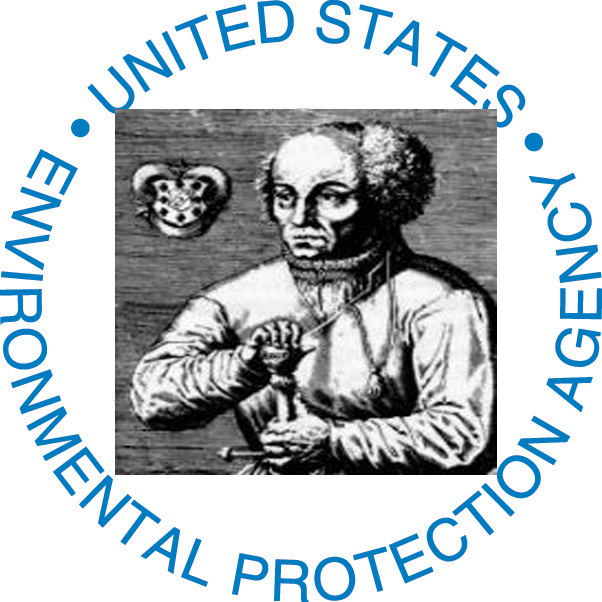 It may come as a shock, but the EPA and industry view exposures to toxic chemicals in basically the same way that a famous 16th-Century occultist named Paracelsus did over 500 years ago: The amount of exposure to a chemical determines its toxicity; the higher the dose, the more toxic it is. The lower the dose, the more benign. "The dose makes the poison."
It may come as a shock, but the EPA and industry view exposures to toxic chemicals in basically the same way that a famous 16th-Century occultist named Paracelsus did over 500 years ago: The amount of exposure to a chemical determines its toxicity; the higher the dose, the more toxic it is. The lower the dose, the more benign. "The dose makes the poison."
This approach says there's a linear one-to-one relationship between volume and harm. It's the basis of all federal, state and local environmental health regulation. It's what drives government "risk assessments." It's what allows there to be such things as "safe levels" of things that don't sound very safe.
But, what if this approach didn't capture all of what was going on physiologically between poison and victim? What if there were different effects happening at the cellular level? What if, like the Renaissance-born theory of Newtonian physics, it couldn't account for phenomenon on a smaller-scale because it didn't have the ability to see it? What if there were certain poisons that,
"depict a weird world of endocrine disruption that is as different from traditional toxicology as quantum mechanics is from the staid clockwork of Newtonian physics. When even minuscule quantities of BPA and other disrupters interact with hormone receptors at crucial moments in development — activating, jamming, hijacking or otherwise messing with their normal function — they can give rise to strange-looking experimental results, especially when other hormones are thrown into the mix."
From the journal Nature comes a case study in why no self-respecting thinking person would trust the current regulatory system to give them the final word on whether any given chemical exposure is "safe" or not.
A citizen can't underestimate the kind of threat this research presents to the Environmental Industrial and Legal Complex. Every permit ever written and awarded. Every environmental law every passed. They all depend on a Paracelsusian view of the world. Prove a different world exists and it turns everything upside down.
"A growing number of academic researchers are making just such a claim for endocrine disrupters, a large group of synthetic chemicals able to interact with cellular hormone receptors. These compounds, which range from the common weed killer atrazine and the plasticizer bisphenol A (BPA) to the antibacterial agent triclosan (used in cleansers) and the vineyard fungicide vinclozolin, don't play by the usual rules of toxicology. On the basis of conventional high-dose testing, regulators have set maximum acceptable levels for each of them that assume all doses below that level are safe. But academic researchers who have studied a wider range of doses, including very low ones found in the everyday environment, say that their experiments usually do not generate the tidy, familiar 'ski-slope' dose-response graphs of classic toxicology. Instead, most endocrine disrupters have 'non-monotonic' dose-response curves, meaning that their slopes change at least once from negative to positive, or vice versa, forming 'U' shapes, inverted 'U's or even stranger shapes that resemble undulating Chinese dragons."
It's not just endocrine disruptors that are challenging tradition. We're already seeing the contradiction between the latest science and regulations when it comes to old-fashioned poisons like lead and soot. There's a scientific consensus among the frontline researchers that there's no safe level of exposure to either one of these toxic substances, And yet, permits are still being written to allow what regulators claim are "safe levels" of them to be spewed into the air and our lungs.
Locally, UT Southwestern epidemiologist Dr. Robert Haley's groundbreaking work on Gulf War Syndrome has found similar effects in studying exposure of veterans to very low doses of nerve agents. Levels of substances that weren't supposed to make people sick individually seem to have a harmful synergistic effect when combined.
The more we can see what's happening at the smallest levels of things – whether its the vibrations of atoms in the chair you're sitting in, or the nuance of chemicals in the cells of a developing fetus – the more we find out that things are more complicated than they appear. Science is pushing us in the direction of a "Precautionary Principle" approach to regulating human chemical exposure. That's a radically different perspective that undermines the billions invested in the status quo allowing continual low level poisoning. After 500 years, maybe it's time to find a new model.
Bi-Annual Sierra Club Legislative Self-Defense Class
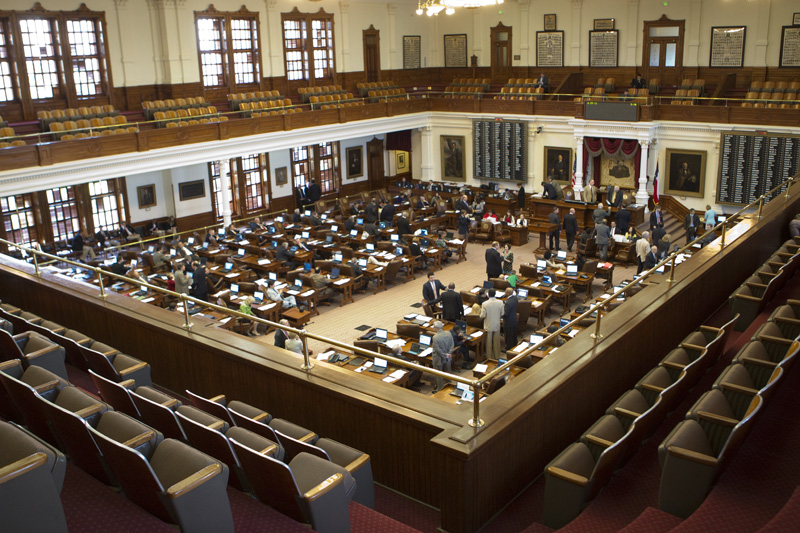 Texas environmentalists are a hardy lot. They have to be given the state's political leadership over the last two decades. Being from Texas, we know what lost causes look like, and how to most gloriously lose them. Being environmentalists, we understand that you have to wade through a lot of biowaste to get any energy produced.
Texas environmentalists are a hardy lot. They have to be given the state's political leadership over the last two decades. Being from Texas, we know what lost causes look like, and how to most gloriously lose them. Being environmentalists, we understand that you have to wade through a lot of biowaste to get any energy produced.
In fact, what's really remarkable about the last 20 years is not how many times environmentalists have been defeated in Texas, but how much they've won through opportunistic skirmishes and battles. We could be much worse off than we are if it hadn't been for citizens fighting back against the very worst ideas and planting seeds of change that have grown and taken root enough to hold when floods of foolishness threaten them.
And of course, there's hardly any bigger flood of foolishness in Texas these days than the convening every two years of the Texas Legislature.
Schools are falling apart, medical care coverage is sketchy, and we'll all be paying toll fees to match our cable bill soon, but never fear, the Legislature will find a way to take a perfectly sensible idea like "sustainable energy" or "environmental health" and make it an object of scorn and ridicule for 120 days.
That's why it's important to be prepared and arm yourself with knowledge about the Lege in advance of its next get together this coming January through May. For a very long time now, the most inexpensive and painless way to do that has been to attend the Sierra Club's bi-annual one-day legislative workshop in Austin. This year it's on Saturday, November 10th – just days after the election.
For only $25 bucks ($5 for students) – and that includes lunch – you can learn all you wanted to know but were afraid to ask about how Texas legislative sausage will get made in 2013. This year, both the Public Utility Commission and Railroad Commission are up for Sunset Review. That means their organizational charters and missions are being looked over from scratch, and all kinds of opportunities for mischief and good stuff present themselves. For people in the Barnett and Eagle Shale plays, the RRC process could make their lives a little better or much, much worse. Same is true for the PUC, which is now backsliding on renewable energy goals.
Even if you don't think you have a dog in this next year's fight, you can always count on some industry-friendly lawmaker throwing a grenade that many of us will have to fall on or disarm to prevent something more dreadful than what we have from happening. Be parepared and be effective. It's only a tank of gas and $25. Register here
Researcher Smackdowns Gas Industry Over Smog Study Criticisms
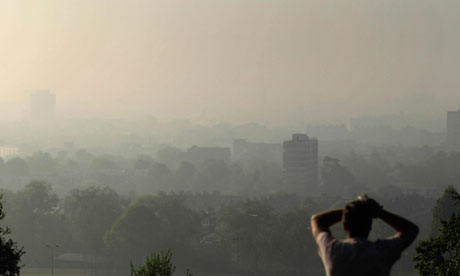 You may remember that Dr. Jay Olaguer with the independent Houston Advanced Research Center (HARC) set off a bit of a controversy last month with publication of a new study showing that gas mining activity in DFW was "significantly" increasing local smog levels 2 to 8 miles downwind. His report focused on flares and compressors and showed that just one facility could increase ozone levels by 2-3 parts per billion. This was another invaluable piece of evidence pointing to the impact of under and un-regulated emissions from the gas mining industry
You may remember that Dr. Jay Olaguer with the independent Houston Advanced Research Center (HARC) set off a bit of a controversy last month with publication of a new study showing that gas mining activity in DFW was "significantly" increasing local smog levels 2 to 8 miles downwind. His report focused on flares and compressors and showed that just one facility could increase ozone levels by 2-3 parts per billion. This was another invaluable piece of evidence pointing to the impact of under and un-regulated emissions from the gas mining industry
It didn't take long for the gas industry to have it usual knee-jerk response – deny everything. Even if you have to misrepresent the original research and lie about its conclusions. First, the PR specialists at Energy in Depth responded without even reading the study. Dr. Olaguer's full response to that piece of hackary is located here.
Next Ed Ireland, PR director of the Barnett Shale Energy Education Council did another whack job trying to discredit Olaguer's work. His falsehoods and mistakes are rebutted point by point here.
Industry charged that the model used by Dr. Olaguer wasn't peer-reviewed. It was – in three different journals.
Industry charged that all the smog-forming Volatile Organic Compounds examined by Dr. Olaguer were treated the same in the model. Wrong again. Highly reactive VOCS – the ones most likely to cause smog problems, are treated in much greater detail than the standard model used by TCEQ and others.
Industry charges the flare emission factors used by Dr. Olaguer are based on the 2010 TCEQ Flare study. They are not.
Industry then falls back on the "we've got so many TCEQ monitors that say everything is hunky-dory" argument. HARC responds by saying that "the TCEQ monitoring network is too sparse to determine the true impact of oil and gas site emissions on air quality." Amen.
HARC's study is unique in that it started from scratch and didn't assume anything – unlike the approach TCEQ and the industry uses. "The HARC model is, in fact, the only model currently available that can tractably assess ozone impacts at very high spatial resolution near sources." TCEQ and the industry don't have a credible response to this study because they've never looked at the same phenomena that Dr. Olaguer is examining.
Pollution from gas drilling and processing is setting back progress in DFW's fight for better air quality. There are no more excuses for local officials to hide behind. Gas may be cleaner when it burns in a power plant, but North Texas has become the natural gas equivalent of Appalachia where the local environment and public health is sacrificed for industry profits.
“It’s My Park – Don’t Frack It”
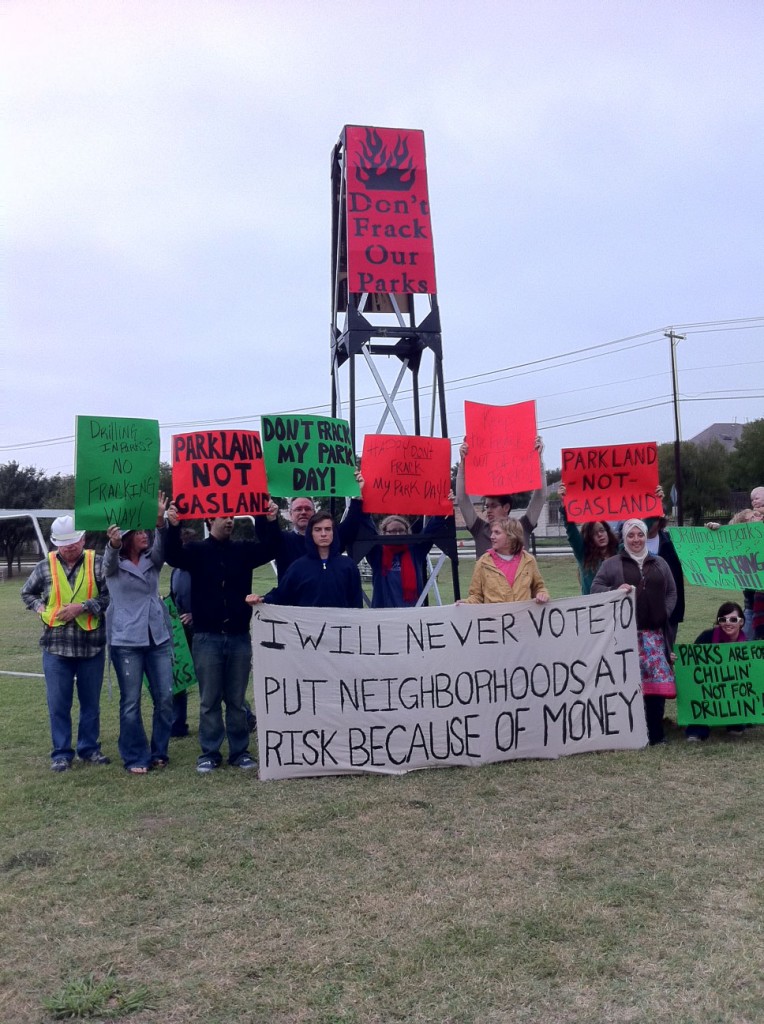 Last Saturday, the City Of Dallas sponsored its annual "It's My Park Day." Usually, it's a assembly of hardy volunteers who are out doing clean-up in Dallas open and green spaces that the city can't always afford to do these days.
Last Saturday, the City Of Dallas sponsored its annual "It's My Park Day." Usually, it's a assembly of hardy volunteers who are out doing clean-up in Dallas open and green spaces that the city can't always afford to do these days.
But this year was different. Showing up at Winfrey Point at White Rock Lake – the home district of "Sulfuric Sheffie" Kadane one of he most vocal supporters for allowing gas drilling in the city's parks – was another, more focused contingent and they brought along a brand new people-friendly prop to get their message across.
Led by Mountain Creek Neighborhood Alliance members Ed and Claudia Meyers, a group of about a dozen residents set-up a 15-foot tall faux drilling rig right there on the Lake shore with a bright red "Don't Frack My Parks" message at the top and then proceeded to hand out flyers quoting Council member Kadane as saying “We’ve got parklands there that aren’t being utilized for anything. What else are you gonna put there?”
The "Drilling for Truth" crew generally got a warm reception at White Rock from park-friendly volunteers, then proceeded onto the Volunteer Appreciation event at Valley View Park where they ran into Councilwoman Linda Koop. All in all, not a bad way to debut a new prop in the fight against irresponsible urban drilling. And now that it's on the move, watch for the rig in your neighborhood.
Barry Commoner: 1917- 2012
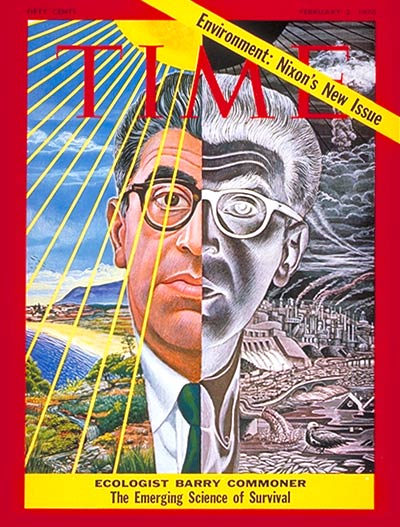 Dr. Barry Commoner died today. It's hard to summarize the breadth and depth of Dr. Commoner's public life in a single blog post. He was one of the original scientist-activists, along with Linus Pauling and Rachel Carson, who were first concerned by the dangers of radiation poisoning in a post WWII world, and then took that concern and applied it to the entire modern world.
Dr. Barry Commoner died today. It's hard to summarize the breadth and depth of Dr. Commoner's public life in a single blog post. He was one of the original scientist-activists, along with Linus Pauling and Rachel Carson, who were first concerned by the dangers of radiation poisoning in a post WWII world, and then took that concern and applied it to the entire modern world.
He was perhaps the most eloquent scientific spokesmen for both the opportunity and trivialization of "environmentalism." To him, the environmental movement was just another name for the broader historical social justice movement that was seeking equality for women and minorities, and ending poverty and war. The same system lead to all of these ills. It was no coincidence that the worst polluters were also the worst union busters and paid women less for the same jobs. Environmentalism was just the name you gave to fighting the side effects of this rotten system when it began to harm the earth's natural cycles as well as our own.
On the other hand, he hated the ghetto of meaning that "environmentalism" had taken on recently, divorced from all of these other symptoms. Barry Commoner was no treehugger. He didn't see value in fighting for the natural world unless it had an impact on people and their collective misery.
“I don’t believe in environmentalism as the solution to anything. What I believe is that environmentalism illuminates the things that need to be done to solve all of the problems together. For example, if you’re going to revise the productive system to make cars or anything else in such a way as to suit the environmental necessities, at the same time why not see to it that women earn as much as men for the same work?”
His four informal rules of ecology were catchy enough to print on a T-shirt and take to the street: Everything Is Connected to Everything Else. Everything Must Go Somewhere. Nature Knows Best. There Is No Such Thing as a Free Lunch.
He insisted that the future of the planet depended on industry’s learning not to make messes in the first place, rather than on trying to clean them up. It followed, by his logic, that scientists in the service of industry could not merely invent some new process or product and then wash their hands of moral responsibility for the side effects. He was a lifelong opponent of nuclear power because of its radioactive waste; he scorned the idea of pollution credit swaps because after all, he said, an industry would have to be fouling the environment in the first place to be rewarded by such a program.
Downwinders benefited from Commoner's lifelong devotion to scholarship. He was an ardent opponent of all forms of waste-incineration, long ago figuring out that industry claims of chemicals going "poof" inside a furnace was at odds with basic physics. Around 1999, Commoner did a landmark study tracing the path of Dioxin emissions from major sources in North America, including TXI's waste-burning cement plant. Methodically, he showed how a poison manufactured and spit out of a smokestack in Midlothian ended-up in the Arctic Circle to become encased in fish fat or whale blubber. Everything Is Connected to Everything Else. Everything Must Go Somewhere.
Downwinders also inherits its sense of mission from the perspective that Dr. Commoner made famous. We see our job as redressing inequality and injustice as it manifests itself in public health and the human physiology. People get shat on by industry. It's our duty to help them, and if we can, build precedents for the next group so that they don't get shat on quite as bad. And if we can get these citizens to also see the similarities between themselves and others who are getting shat on by the same Powers-That-Be, then we're making progress.
Here's to Dr. Commoner and the recognition that no environmental battle is fought in a social or political vacuum.
“Instead of waiting for the EPA, we’re requiring compliance in 2013″
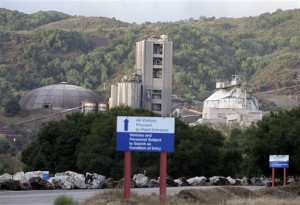 That's the triumphant statement of Santa Clara County Supervisor Liz Kniss after a September 19th vote by the Bay Area Air Quality Control District to implement new emission standards for the Lehigh Permanente Southwest Cement Plant in Cupertino, the only cement plant in the San Francisco Area. The standards are as strict or stricter than the slew of new regulations proposed by EPA, and will be imposed by the original EPA deadline of 2013 instead of the expected delayed start date of 2015.
That's the triumphant statement of Santa Clara County Supervisor Liz Kniss after a September 19th vote by the Bay Area Air Quality Control District to implement new emission standards for the Lehigh Permanente Southwest Cement Plant in Cupertino, the only cement plant in the San Francisco Area. The standards are as strict or stricter than the slew of new regulations proposed by EPA, and will be imposed by the original EPA deadline of 2013 instead of the expected delayed start date of 2015.
Kniss, who serves on the district’s board of directors, said the new standards require sharply reduced emissions of various pollutants (NOx, particulate matter, mercury, dioxins, hydrochloric acid, hydrocarbons and ammonia). In the case of each pollutant, the new standard will match or exceed those recommended by the U.S. Environmental Protection Agency, scheduled for implementation in 2015. For example, the allowable average daily emissions of mercury would be reduced from 0.72 pounds to 0.05 pounds – a 93 percent reduction.
“The new (district) regulations make Lehigh Permanente the most tightly regulated cement plant in the nation,” Kniss said. “A 93 percent reduction in mercury is very dramatic.”
Why can't Texas do this as well? It could. If the Texas Commission on Environmental Quality was interested, it could pass it's own set of rules that mimicked EPA's and vote to implement them next year. But that will never happen because Governor Perry is dedicated to regulating industry with ideology, not science. In California, each region has its own air quality board that's in charge of new pollution control measures. That's why this local entity can set cement plant air pollution standards that are now the toughest in the country.
Left unsaid by any of the stakeholders is the added pressure this move in California puts on EPA in Washington DC. The Agency still hasn't finalized the watering down and delay of the new rules, despite a national public hearing in DFW in August, and thousands of submitted comments. The Cupertino plant will be operating under a distinct disadvantage compared to its peers if EPA goes ahead and delays the rules until 2015, while it must meet them by next year.
Meanwhile DFW's air quality – with more cement manufacturing capacity than any other place in the county – is still being held hostage by a state agency and Governor who don't think any more regulations of any kind are needed for the Midlothian kilns. Until we disconnect our fate from Austin's political ambitions, North Texas will never have clean air.
Study: Dioxin Exposure Can Reach Three Generations into the Future
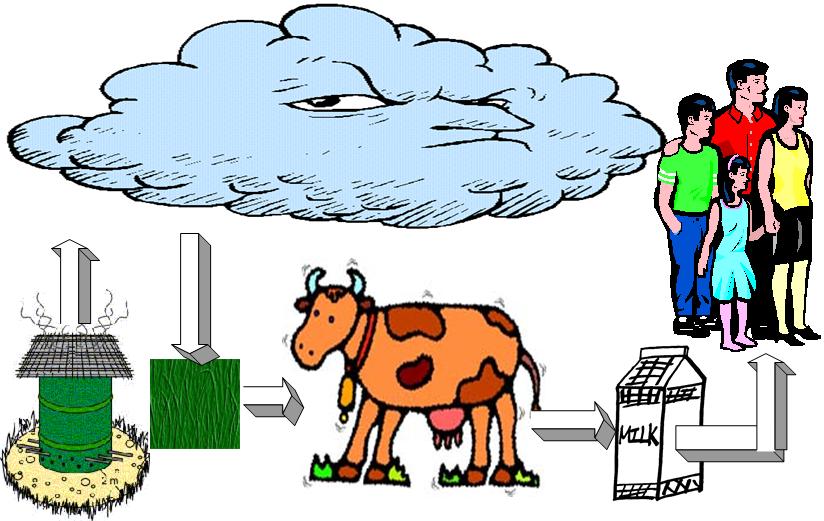 Via Environmental Health News:
Via Environmental Health News:
"Pregnant rats exposed to an industrial pollutant passed on a variety of diseases to their unexposed great-grandkids, according to a study published Wednesday. Washington State University scientists found that third-generation offspring of pregnant rats exposed to dioxin had high rates of kidney and ovarian diseases as well as early onset of puberty. They also found changes in the great-grandsons' sperm. The great-grandkids – the first generation not directly exposed to dioxin – inherited their health conditions through cellular changes controlling how their genes were turned on and off, the researchers reported. The dioxin doses used in the study were low for lab rats, but are higher than most people’s exposures from the environment. The study raises questions that won’t be easy to answer about people’s exposure to dioxins from food and industrial sources."
The new study examined how dioxin exposure affects a person’s epigenome – a road map of chemical changes to DNA and associated proteins. As a fetus develops, its epigenome is reprogrammed, and it can be permanently altered by exposures. The epigenome is then passed down through generations – along with susceptibility to adult-onset disease.
Cement kilns are a large source of dioxins, which are so toxic they're measured in grams, not pounds or tons. Lead smelters are another large source – the Exide smelter in Frisco has been of the largest dioxin polluters in the state. Any kind of incineration process, especially involving chlorides/plastics will release dioxins. This is why its a bad idea to burn plastic garbage as TXI's cement plant in Midlothian does now, or build a "waste-to-energy" incineratator that burns "un-recyclable plastics," as many of us suspect the City of Dallas want to do in the near future.
However, most people get most of their exposure to dioxin from ealing fatty foods that contain it – dairy products like cheese and milk. It enters the food chain as fallout from thousands of different sources, gets absorbed into the soil and plants, and those plants are then eaten by hungry cows.
The findings are not directly applicable to humans, researchers said. The way the animals were dosed is not the same way people are exposed to dioxins, and the moms were dosed for a few days – roughly similar to the first trimester – which does not mimic typical human exposure that is low and gradual but builds over time, Wolstenholme said. Humans and rats also clear dioxin from their bodies differently, she said.
“We cannot know from these studies if people are similarly at increased risk for the same diseases,” Wolstenholme said.
Still, the researchers wrote that their findings “have implications for the human populations that are exposed to dioxin and are experiencing declines in fertility and increases in adult onset disease, with a potential to transmit them to later generations.”
Report: Texas Doesn’t Monitor the Oil and Gas Industry Very Well
 Yesterday, Downwinders at Risk was one of about a dozen groups that was proud to help release new Earthworks report that shows just much Texas state government is neglecting its duties to protect the public health and safety from the risks posed by oil and gas industry facilities.
Yesterday, Downwinders at Risk was one of about a dozen groups that was proud to help release new Earthworks report that shows just much Texas state government is neglecting its duties to protect the public health and safety from the risks posed by oil and gas industry facilities.
"Breaking all the Rules:The Crisis in Oil and Gas Regulation," reveals that states with some of the largest concentrations of those facilities – Texas, Pennsylvania, Ohio, New Mexico and Colorado – fail to enforce their oil and gas development regulations. But you knew that.
What you may not know is the full extent of the problem. Bolstered by interviews with former regulators and a year-long examination of the data, the report concludes that:
- 296,000 active oil and gas wells in Texas were uninspected in 2011.
- Companies that are found in violation of regulations are rarely penalized: in 2012, only two percent of violations have been penalized to date.
- Penalties are so weak that it is cheaper for violators to pay the penalty than comply with the law: the total value of financial penalties in Texas in 2009 was less than the value of the gas contained in a newly drilled gas well.
Go read the whole thing over at Sharon's. Good work.
Male Shrinkage: The Gene Pool is Getting Colder
 We're still trying to run down the original source for this story, but since it hit the wires last week, we'll reprint what's already out there.
We're still trying to run down the original source for this story, but since it hit the wires last week, we'll reprint what's already out there.
A "study from Italy," no details, concludes that the average size of male genitalia has decreased by 10% over the last 50 years. Weight gain, smoking, drinking, and yes, environmental pollutants are all listed as possible factors.
It isn't exactly headline news that chemicals can mess with your male parts in pretty dreadful ways. Endocrine Disruptors like lead, dioxins, and other poisons provide a whole horror movie worth of case studies where males of all species end up with female characteristics or no characteristics at all. Likewise there are now plenty of studies suggesting that modern sperm counts are not, er, up to past standards.
The latest study, depending on its credibility, would only further confirm that we don't have to blow ourselves up to extinguish the human race. We can just slowly but surely make it impossible to reproduce ourselves through chemical exposures.
Obama Names First EPA Region 6 Administrator from New Mexico
 In a Friday news dump, and a sign the administration must feel good about its chances of winning in November, former New Mexico Secretary for the Environment Ron Curry was appointed to be the new EPA Region 6 Regional Administrator, replacing Dr. Al Armendariz who resigned in April.
In a Friday news dump, and a sign the administration must feel good about its chances of winning in November, former New Mexico Secretary for the Environment Ron Curry was appointed to be the new EPA Region 6 Regional Administrator, replacing Dr. Al Armendariz who resigned in April.
It's also an indication of how much less political clout Texas has these days. Ever since there have been regional administrators at EPA, there's been a Region 6 that includes,Texas, Arkansas, Oklahoma, New Mexico, and Louisiana and there's always, always been a Texan in charge. The number of EPA-regulated facilities in Texas dwarfs all the other state's combined, but it was the state's once-powerful Congressional delegation and the influence of those facilities in Austin and DC that kept natives form the Lone Star State in the Regional Administratorship, no matter their political affiliation. But no more. Curry is the first person outside of Texas to ever be named Region 6 Regional Administrator. And he comes from the only state in the region likely to go blue in November.
Curry is a strong choice for environmentalists. He was a close runner up to Armendariz in 2009, and has the endorsement of New Mexico's environmental community. His term as New Mexico environmental chief coincided with Bill Richardson's two terms as Governor. He is a confident progressive, an experienced environmental attorney, and described by New Mexico's Democratic Senator Tom Udall as a "pragmatic thinker."
Curry will certainly have his work cut out for him dealing with Governor Rick Perry and his alter ego, the Texas Commission on Environmental Quality, which has been waging an all out jihad against EPA ever since Obama took office and selected a grassroots favorite in Armendariz to head up Region 6. With signs pointing to Perry running for Governor again, chances are things won't get any easier. According to this account in the Texas Tribune, Curry was involved in implementing groundbreaking climate change programs in New Mexico, a sure way to endear him to Perry and Texas Attorney General Greg Abbott.
